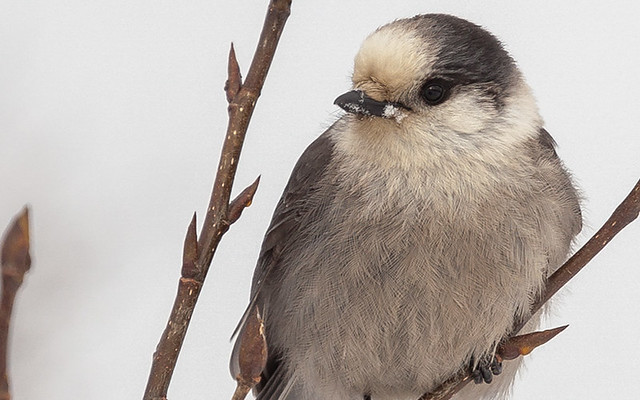The grey jay (Perisoreus canadensis), also gray jay, Canada jay, or whisky jack, is a passerine bird of the family Corvidae. It is found in boreal forests of North America north to the tree line, and in the Rocky Mountains subalpine zone south to New Mexico and Arizona. A fairly large songbird, the grey jay has pale grey underparts, darker grey upperparts, and a grey-white head with a darker grey nape. It is one of three members of the genus Perisoreus, a small genus more closely related to the Cyanopica genus of magpies than to other birds known as jays. The grey jay itself has nine recognized subspecies.
Grey jays live year-round on permanent territories in coniferous forests, surviving in winter months on food cached throughout their territory in warmer periods. The birds form monogamous mating pairs, with pairs accompanied on their territories by a third juvenile from the previous season. Grey jays adapt to human activity in their territories and are known to approach humans for food, inspiring a list of colloquial names including “lumberjack”, “camp robber”, and “venison-hawk”. The International Union for Conservation of Nature (IUCN) considers the grey jay a least-concern species; however populations in southern ranges may be impacted by anthropogenic climate change.
The species is associated with mythological figures of several First Nations cultures, including Wisakedjak, a benevolent figure whose name was anglicized to Whiskyjack. In 2016, an online poll and expert panel conducted by Canadian Geographic magazine selected the grey jay as the national bird of Canada, although the designation is not formally recognized.
(From: Wikipedia, April 2017)



